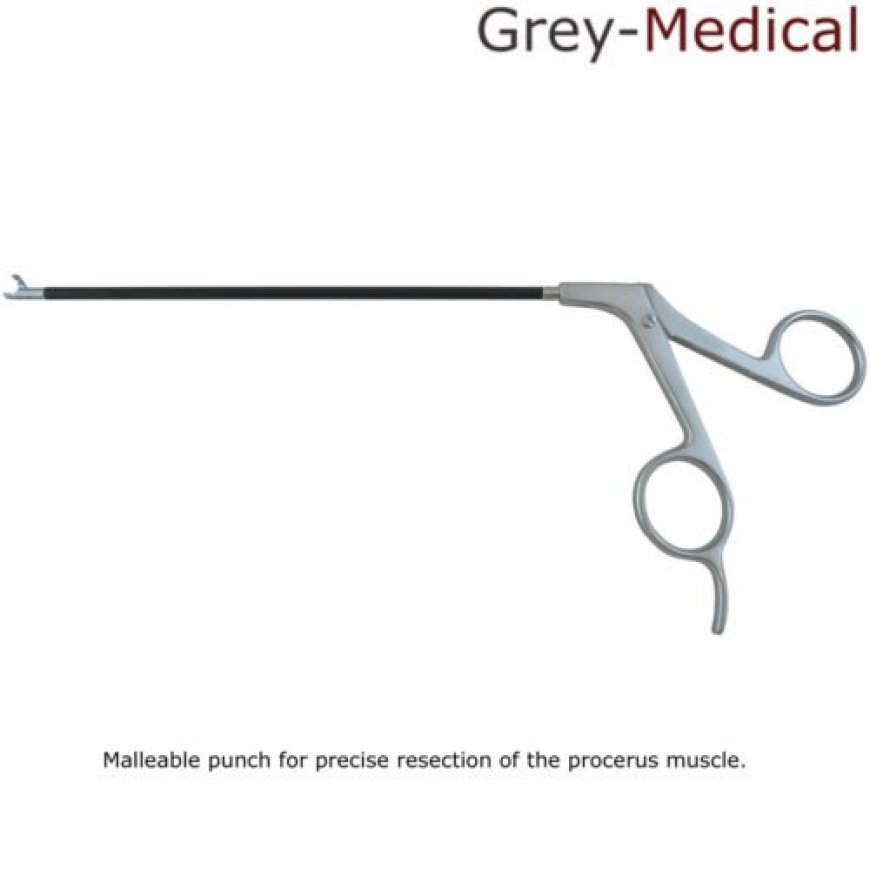Endoscopic Biopsy Forceps: A Key Tool for Minimally Invasive Diagnoses
Daniel Endo Cup Biopsy Forceps, Straight, 6” 15 cm Malleable punch for precise resection of the procerus muscle. New handle design allows for better control and less tip movement. Insulated shaft permits cauterization. Buy Now ! Pay by Paypal or Credit Card And Get Shipping at your Door….

Endoscopic procedures have significantly transformed the way medical professionals perform diagnostics and treatment, offering a less invasive alternative to traditional surgical techniques. One of the most crucial tools in this domain is the endoscopic biopsy forceps. These specialized instruments allow doctors to obtain tissue samples from inside the body with minimal discomfort and faster recovery times, helping to diagnose a wide range of conditions, including cancers, infections, and inflammatory diseases. With their precision and versatility, endoscopic biopsy forceps are indispensable in modern medicine.
The Role of Endoscopic Biopsy Forceps in Diagnosis
Endoscopic biopsy forceps are designed to collect tissue samples from deep within the body through a flexible, minimally invasive procedure. The forceps work by being inserted through an endoscope, which provides a live visual feed of the area being examined. Once the appropriate area is identified, the forceps' sharp, grasping jaws capture small tissue samples, which are then sent for further analysis in a laboratory. This process helps doctors identify abnormal cells, detect tumors, or diagnose infections, providing valuable insights that guide treatment decisions.
These forceps are especially useful in areas that are difficult to reach with traditional surgical methods, such as the lungs, colon, or upper gastrointestinal tract. The ability to obtain tissue from hard-to-reach organs makes endoscopic biopsy forceps a critical tool in early cancer detection, helping doctors diagnose conditions like lung cancer, colorectal cancer, and gastric cancer at an early stage when treatment options are more effective.
Applications in Various Medical Specialties
Endoscopic biopsy forceps are used across multiple specialties, making them an essential tool for a wide range of diagnostic procedures. In gastroenterology, these forceps are frequently used during endoscopies, such as colonoscopies or upper GI endoscopies, to collect tissue samples from the colon, stomach, or esophagus. These biopsies help identify conditions such as Crohn's disease, ulcerative colitis, and gastrointestinal cancers.
In pulmonology, endoscopic biopsy forceps are used during bronchoscopy to obtain tissue samples from the lungs, particularly for diagnosing lung cancer, infections, or other pulmonary diseases. The forceps enable physicians to reach deeper parts of the lungs where abnormalities may be located, making it possible to biopsy even the most inaccessible tissues.
In urology, endoscopic biopsy forceps are used to collect samples from the bladder, kidneys, or prostate, aiding in the diagnosis of conditions like bladder cancer or kidney disease. The ability to perform biopsies through minimally invasive procedures reduces patient discomfort, allows for quicker recovery, and decreases the risk of complications that can arise from traditional surgical approaches.
Design and Functionality of Endoscopic Biopsy Forceps
Endoscopic biopsy forceps are designed for precision and ease of use. These instruments typically feature a pair of fine, sharp jaws that can grasp and cut small tissue samples. The jaws are activated either by a manual trigger or a controlled mechanism that allows the operator to carefully control the force and movement required to capture the tissue sample. The forceps are made from durable materials, often stainless steel, which ensures they are strong enough to perform the task without breaking or dulling easily.
The versatility of endoscopic biopsy forceps comes from their compatibility with a variety of endoscopes, allowing them to be used in numerous types of endoscopic procedures. These forceps are also available in different sizes, configurations, and tip designs to meet the needs of specific diagnostic situations. Whether used in gastrointestinal, pulmonary, or urological procedures, endoscopic biopsy forceps provide reliable, accurate sample collection with minimal patient discomfort.
Benefits of Endoscopic Biopsy Forceps
The main benefit of using endoscopic biopsy forceps is their ability to perform biopsies in a minimally invasive manner. Patients undergoing endoscopic procedures generally experience less pain, a shorter recovery period, and a lower risk of infection compared to those who undergo traditional surgical biopsies. Because the procedure is less invasive, patients can often return to their normal activities much sooner, making it a more convenient option for those with busy schedules or who want to avoid long hospital stays.
Moreover, the precision offered by endoscopic biopsy forceps is unmatched. Real-time visualization through the endoscope ensures that the tissue sample is taken from the correct area, improving the accuracy of the diagnosis. This allows doctors to target specific abnormalities, reducing the chances of sampling errors and ensuring that the biopsy results are as accurate as possible.
Conclusion
Endoscopic biopsy forceps play a vital role in the modern diagnostic toolkit, offering a less invasive, more efficient way to obtain tissue samples for laboratory analysis. Their precision, versatility, and ability to work in hard-to-reach areas make them indispensable in diagnosing a variety of conditions across multiple medical specialties. As medical technology continues to advance, endoscopic biopsy forceps will remain a cornerstone of patient care, helping doctors detect diseases early and providing patients with quicker, more accurate diagnoses.

 Greymedical
Greymedical